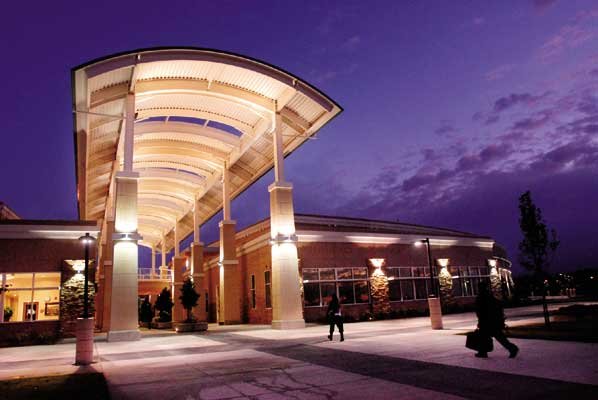
The school district will save about $20 million on Christopher
High School’s second phase thanks to a decline in the cost of
construction. Instead, the school will still spend about $38
million to build a performing arts center, an additional wing of
classrooms and a second parking lot.
The school district will save about $20 million on Christopher High School’s second phase thanks to a decline in the cost of construction. Instead, the school will still spend about $38 million to build a performing arts center, an additional wing of classrooms and a second parking lot.
Gilroy Unified School District trustees ratified the design of phase two and amended the school’s aquatics center design, which will boost the project’s cost by $500,000 but will deepen the pool to 13 feet on one end and add two diving boards. These modifications will allow CHS students to host a competitive diving program.
The bulk of the trustees’ discussion centered around the performing arts and aquatics centers. While the school district plans to secure $4.2 million in joint use funds from the city for the aquatics center, the district has not discussed sharing the $14 million performing arts center with the city, an option some trustees suggested at a recent board meeting.
The performing arts center will include a 450-seat theater complete with three catwalks and state of the art equipment. Though trustee Denise Apuzzo cringed at the cost and decried the theater as “the most glaring example of inequity” in the district, she approved the design along with every other trustee.
“I just don’t want to take away from one school because a few individuals say we don’t have this at the other school,” countered trustee Fred Tovar, who also serves as vice president of CHS’s parent club. “I see this as a venue that both schools would benefit from and the City of Gilroy as well. We have an excellent opportunity and I don’t want to cut corners.”
Even if the district doesn’t enter into a formal joint-use agreement with the city – which isn’t likely given the city’s current financial state and existing debt of $6 million to the district for the joint-use gym and aquatics center, trustee Javier Aguirre said – trustees said they envision a center for the performing arts that the entire community will benefit from. Trustee Rhoda Bress pointed out that one of the first performances in CHS’s existing black box theater was put on by Brownell Middle School students.
Initial estimates put the price of construction of phase two close to $60 million, Superintendent Deborah Flores and Deputy Superintendent Enrique Palacios said. They were pleasantly surprised when two independent cost estimators priced the construction of phase two at less than $40 million. The first phase of the school cost about $123 million.
“The climate is so good,” Flores said. “There’s not a lot of work out there for contractors. We expect to have a lot of bids. It’s pretty obvious that we will have a lot of competition for the project, which is great news for the district.”
Unlike the lease-leaseback financing method the district used to build the first phase of the high school, the district will use the traditional bid process for phase two, which Flores believes will work in the district’s favor in the current economic climate. The district was previously drawn to the lease-leaseback method because it supposedly guaranteed a maximum price at the beginning of the project, Flores said. However, she said the maximum price increased over the course of the project, defeating the purpose.
Flores hopes to award the bid for phase two by June to take advantage of the dry, summer months ideal for construction. Construction will continue into the school year while children are on campus.
Palacios said he will work with CHS Principal John Perales and the general contractor to establish the best means to prevent disruption of the school day. Building a fence between the current campus and the construction area – effectively turning the construction area into non-school property – will help as construction workers are not allowed on campus without being fingerprinted, Flores said.
The second phase of CHS is scheduled for completion in August 2011 and will add space for an additional 1,000 students, bringing the school’s total capacity to about 2,000, Flores said. The district will reconvene its boundary committee this spring to tweak the existing boundary to accommodate 100 new high school students that enrolled this year alone.
“A lot of new students enrolled at the high school level,” Flores said. “There are students on the map now that weren’t there two years ago.”
The existing boundary will remain the same for next year but parents and students can expect slight revisions in 2011, Flores said.
Measure P, the $150 million school facilities bond voters passed in November, will contribute $26.7 million to the second phase of CHS, according to district documents. State funds will make up the difference.
“(Measure P) has been a wonderful gift,” Flores said. “I don’t know where we would be housing high school students without it.”













